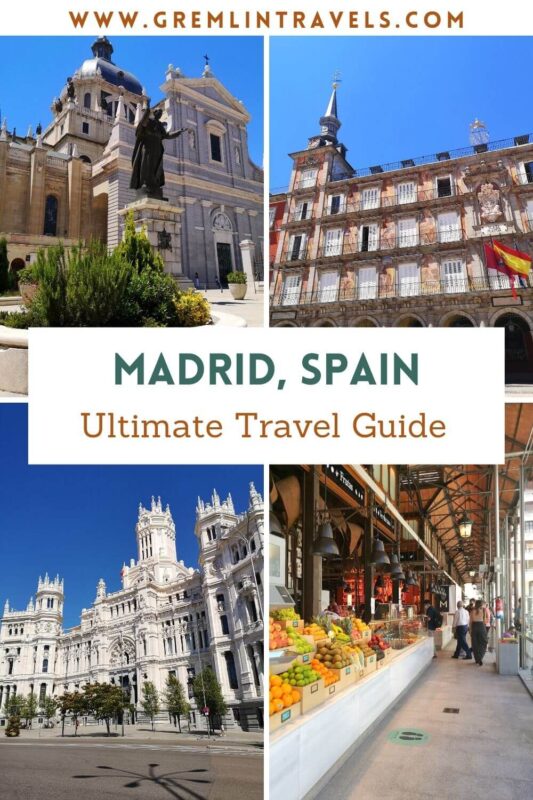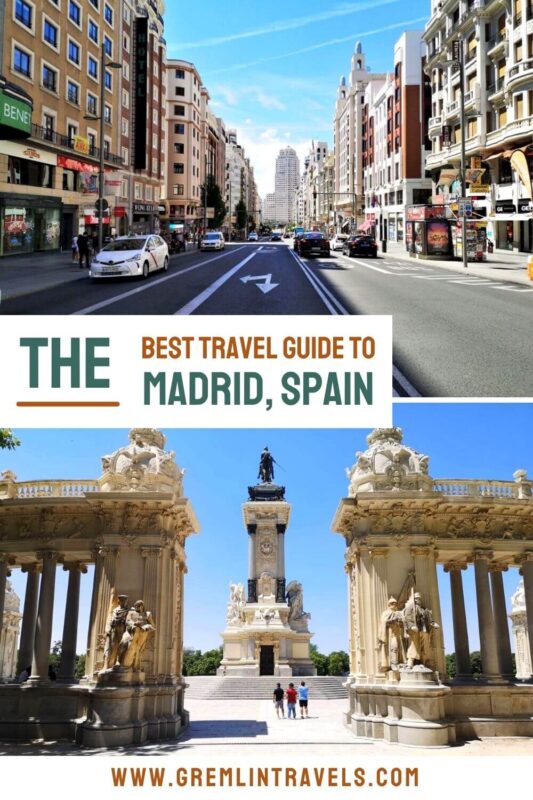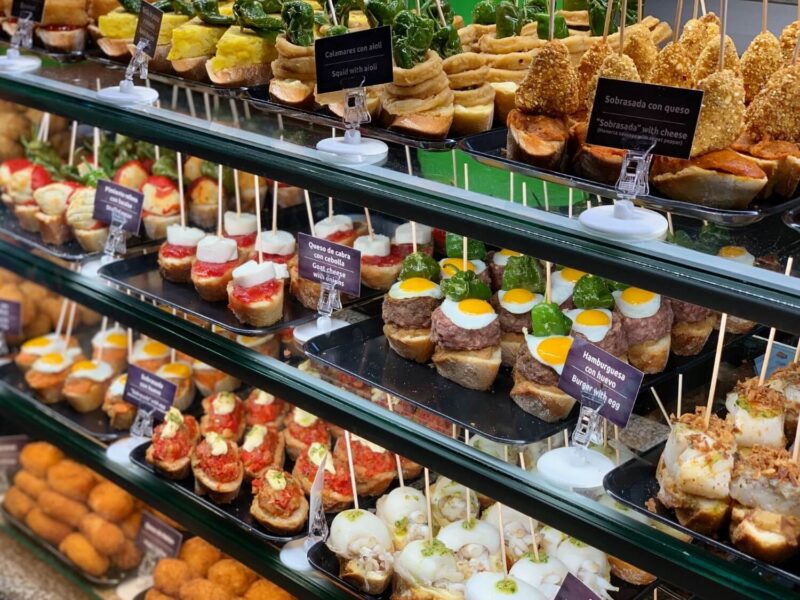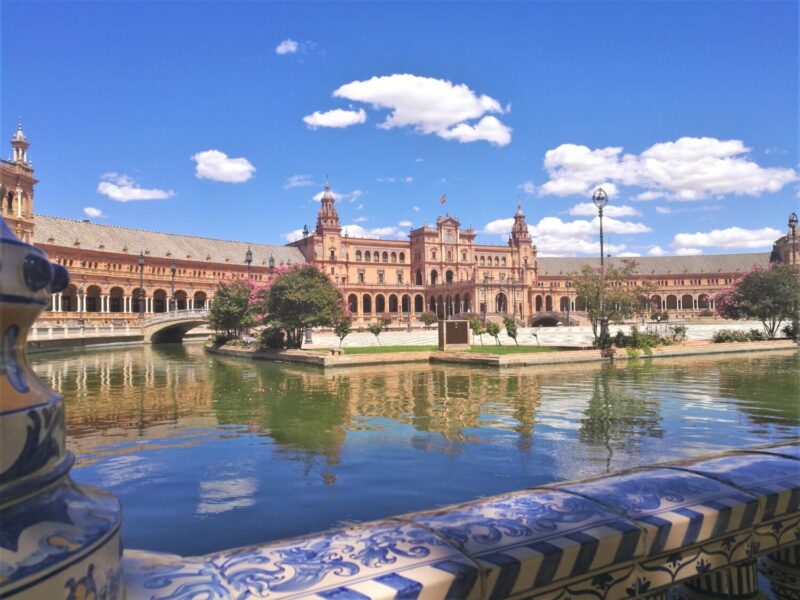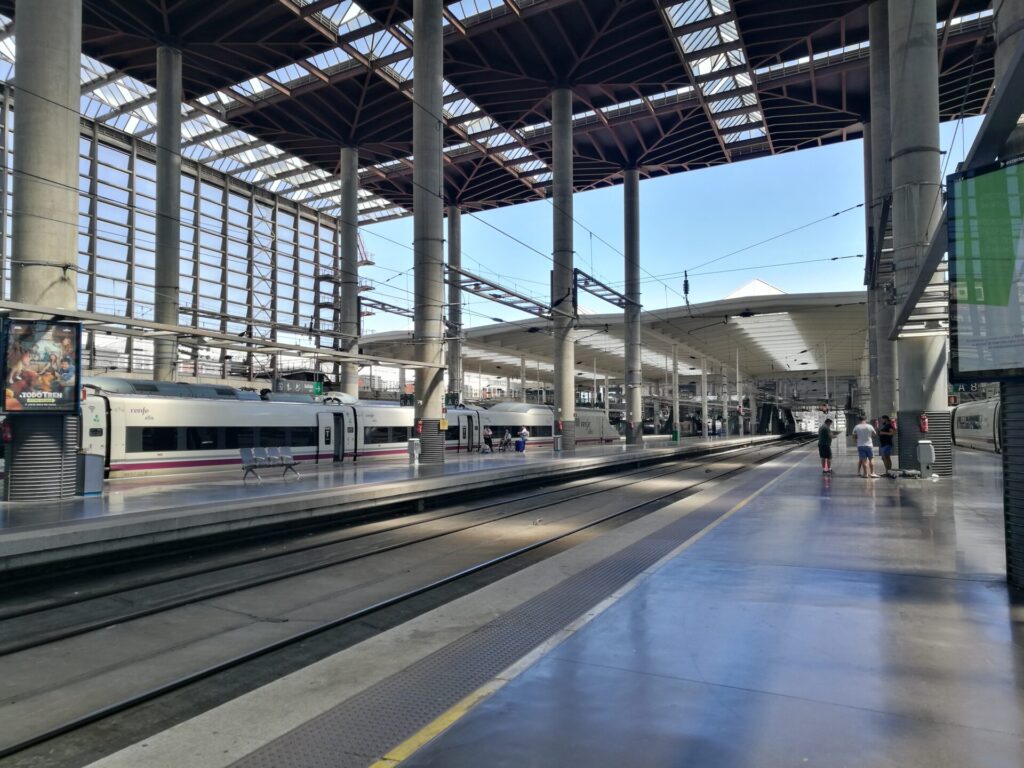Madrid
Welcome to our Madrid travel guide, exploring the capital city of Spain. Madrid is hard to put into words and really does need visiting to truly appreciate all that it has to offer. Although the city may not have an iconic landmark building like that of other Spanish or European cities, Madrid is packed full of impressive buildings, one after another. As a result, the city is awe inspiring, with an incredible display of historical, beautiful and architecturally brilliant buildings. A visit to Madrid leaves you wanting more.
Not only does the city deliver in terms of beauty and grandeur, it has, like much of Spain, an excellent nightlife and food scene, and is home to some of Spain’s and Europe’s best restaurants. It also has some of Europe’s best shopping, almost too many things to see and do, a well connected transport system, warm, sunny weather (most of the time) and is more reasonably priced than you might think. Madrid encapsulates what Spain is all about, and more, and it is wonderfully glorious.
Madrid Travel Guide Contents
Check out our other Spain Travel Guides:
Barcelona Travel Guide | Malaga Travel Guide | Seville Travel Guide
Madrid Travel Guide
How to get to Madrid
Madrid-Barajas Airport (MAD) is located 13km from Madrid city centre. It is Spain’s largest and busiest airport and is also one of Europe’s. The airport has 5 terminals (T1, T2, T3, T4 and T4S), of which the newest terminals, T4 and T4S, are connected to the rest via a shuttle service. There are reasonably good facilities at the airport including shops, restaurants, cafes and lounges. You may also arrive into Madrid via train from elsewhere in Spain or Europe. So we’ve covered the main ways of getting from the airport and train station to the city centre:
Bus – Taking 50min and with just 3 stops, the bus is not the ideal method for reaching the city centre. Buses leave terminals 1, 2 and 4 every 15min. Tickets cost €5 ($5.85) and can only be bought in cash from the driver
Taxi – Available from outside arrivals, taxis in Madrid are white with a red stripe, available 24/7, and take 20min from the airport to the city centre, making this the most convenient option but also the most expensive, costing a flat fee of €30 ($35) to the city centre
Train – The train departs from T4, has 5 stops and takes 27min, the train is not our recommended option as it is likely you will need further transport after you get off. Tickets cost €2.60 ($3.00) per person and can be bought at the station
Metro – Departing from T4, the metro is a quick, convenient and cheap way to get to the city centre. There is an airport surcharge of €5 for the metro plus the €2.50 ($2.95) cost of a TTP card (public transport card) to load it into (you can load more than one journey on one card if you are happy to share the card between you). Line 8 leaves frequently and stops at numerous stations including Nuevos Ministerios (22min), from here you can change lines to get to most parts of the city. The metro runs from 06:00 until 01:30 and tickets can be bought at the machines or desks in the station
From Madrid Atocha train station – If you arrive in Madrid Atocha then you’re already in the centre of Madrid. The easiest way to get to your final destination will be by connecting to the Madrid metro system. A single ticket costs €1.50 ($1.75), plus the €2.50 ($2.95) charge for a TTP card, as mentioned above. Taxi costs vary but for a destination such as Gran Via, the price will be in the region of €10. We recommend using Trainline Europe to book trains throughout Spain and Europe
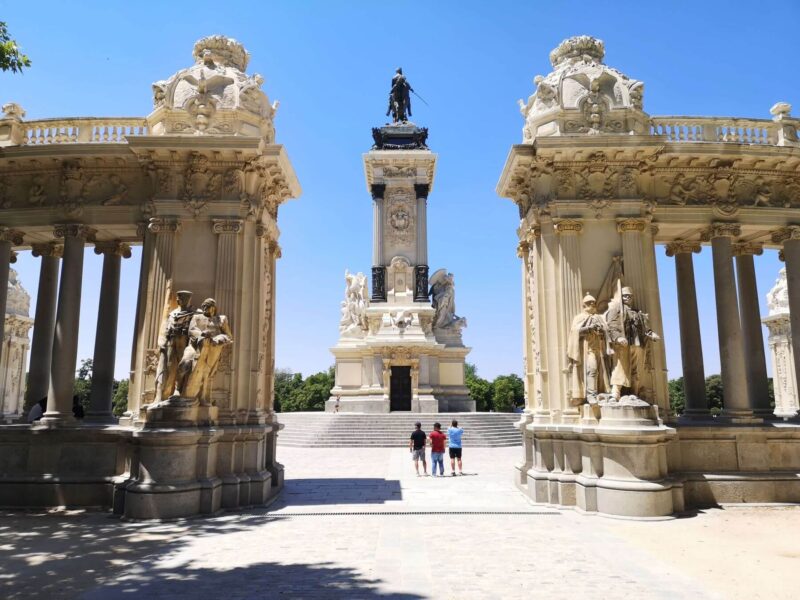
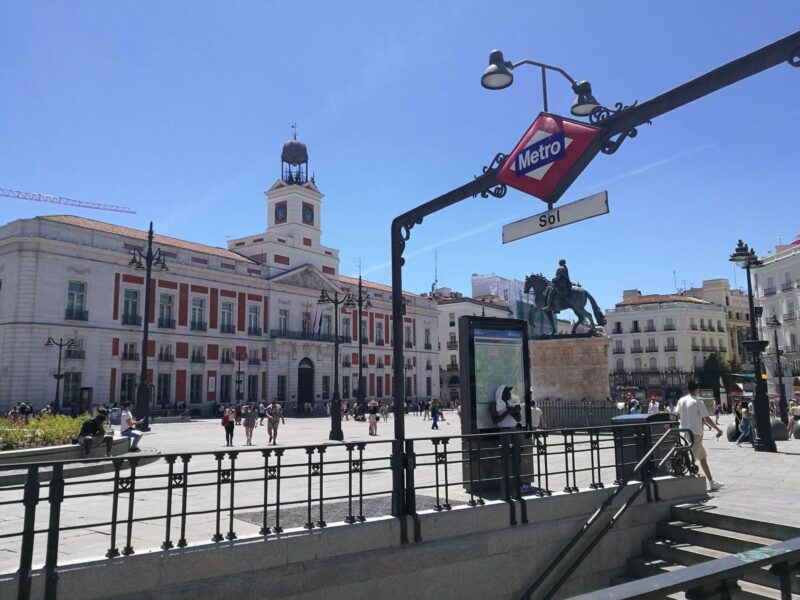
Areas to stay in Madrid
Being a large city, there are quite a few options of areas to stay in the city, depending on what you are looking for. Staying in the right area can make a big difference to any trip, particularly in terms of convenience, ease of getting around and what you’re likely to see more, so choosing the right fit is important. Let’s take a look at the most popular areas to stay in the Madrid:
Gran via – The main street of the city, Gran Via runs from plaza Espana to the bank of Spain and is home to shops and restaurants. Lots of smaller streets span off from here with more cafes, bars and restaurants and lead to some of the city’s most popular attractions. This is one of our recommended areas to stay
Malasana – A central neighbourhood that is known for its nightlife with lots of cool bars and restaurants and a local vibe
Plaza Mayor – This beautiful central square and the surrounding streets are packed with shops, restaurants and bars and is within walking distance to Gran Via, La Latina and other areas. This is one of our recommended areas to stay
La Latina – The oldest part of Madrid, La Latina still has some remnants of its past and is home to a great selection of tapas bars
Salamanca – One of the more upmarket and wealthier areas of the city, here you will find great shopping and stylish restaurants
Accommodation in Madrid
Madrid has a wide variety of accommodation options to choose from, as one might expect of a major city. There are hostels, hotels, apartments, guest houses and everything in between available, ranging from budget to luxury. Mid to high-end hotels in Madrid are considerably less expensive than some European capital city’s, so you can explore options here that you may not elsewhere. During peak season, prices start at around €25 ($25) per person for a bed in a hostel dorm, an average of €60-€100 ($70-$115) for a double hotel room, to over €160 ($190) per night in some of the best hotels in the city. There are tons of great accommodation options to choose from in Madrid, here are just a few of our top picks of where to stay in Madrid:
Budget Hostel | Hostel The Hat, Madrid – One of the best hostels in Madrid, Hostel The Hat is located a few minutes from Plaza Mayor and includes simple, modern rooms and facilities such as free WiFi, a rooftop bar and paid for bike hire. Rooms range from dorms to private rooms and larger family rooms
Mid-Range Hotel | Dear Hotel Madrid – Placed in an excellent location on Gran Via, next to Plaza de Espana, Dear Hotel Madrid is a beautiful hotel with comfortable, well-designed rooms, a rooftop bar with a plunge pool and a great restaurant and bar. This is a great base for exploring Madrid
High-End Hotel | NH Collection Madrid Suecia – Highly regarded as one of the best hotels in Madrid and great value for money, the 5-star NH Madrid Suecia is excellently located off Gran Via and is perfect for exploring most areas of the city. Rooms are contemporary and comfortable and a rooftop bar with stunning views over Madrid
Luxury Hotel | The Principal Madrid – For a touch of luxury, the Principal Madrid offers just that and more. This stylish hotel is located just off Gran Via and has beautiful rooms, a fantastic restaurant and bar, a fitness centre and all the usual services and amenities you would expect from a luxury hotel
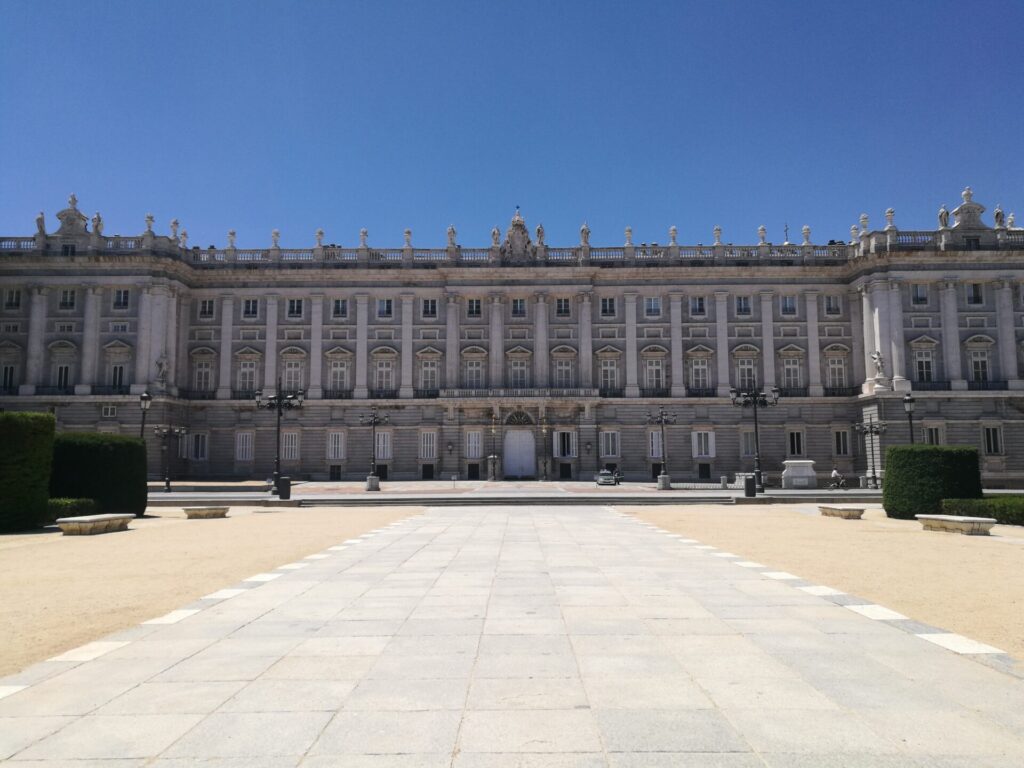
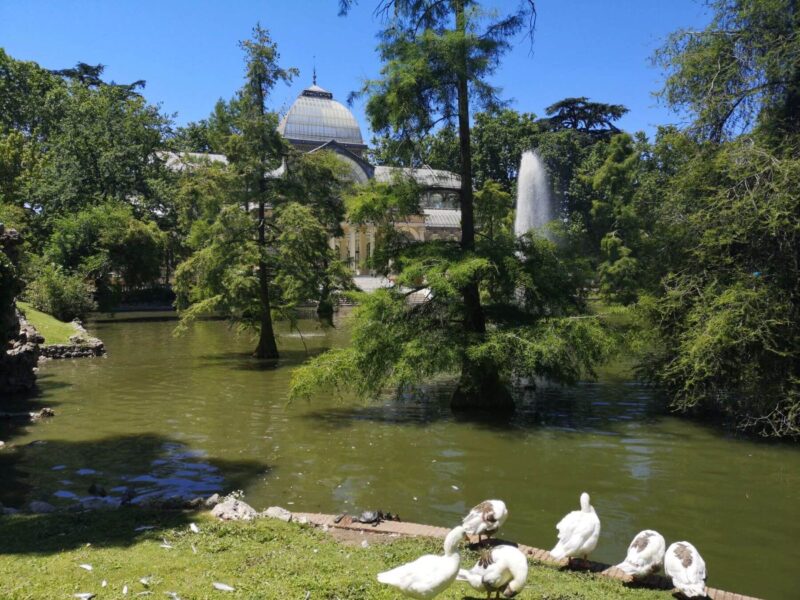
How to get around Madrid
The city of Madrid has a population of 3.4million people, which highlights its scale. Thankfully, it has a great public transport system which makes getting around the city a breeze. On top of this, some of the most major tourist attractions are within easy walking distance to each other, but in the summer heat, walking from one place to another can be a bit of a struggle. If you plan on using transport to get around the city, then here are your options:
Metro – as the second longest metro system in Europe, Madrid’s Metro system has extensive coverage across the city, making it the most convenient, quickest and most economical way to get around the city. It has 13 lines and over 300 stations, operating frequently from 06:00 to 01:30. A single ticket costs €1.50 ($1.75), while a 10 journey ticket costs €12.20 ($14.25). You must purchase a public transport card (TTP) for €2.50 ($2.90) and load the journeys/tickets on. These can be bought in stations, at machines or desks or at tobacco shops
Bus – with over 200 lines, the bus network in Madrid is extensive, covering the majority of the city. Buses run frequently every day from 6:00 to 23/23:30, when night buses on 27 lines take over. Single trip tickets cost €1.50 ($1.75) and must be purchased on the bus, 10 journey tickets cost the same as the metro and can be bought at metro stations or tobacco shops
Train – you won’t likely be using the train to get around the city as there are only two major stations, Madrid Atocha and Madrid Chamartin. Atocha is the main station and caters to the suburban rail, long-distance and high-speed rail in Spain and also European rail services. Use Trainline Europe to book trains in advance for the best prices.
Taxi – readily available, taxis can be found throughout the city and are white cars with a red diagonal stripe. The basic fare is €2.50 ($2.90) and then €1.10 ($1.25) per km. Charges are higher at night and in the early morning and public holidays
Ride Hailing App – various ride-hailing apps exist throughout Spain, the most popular being Cabify and Uber. These make for a convenient and generally more affordable option compared to standard taxis
Things to do in Madrid
With so much to see and do in the city, finding what things you should prioritise and spend time seeing can be difficult. We’ve got an extensive list of all the best things to do in Madrid but here is our compact list of the top 5 things to do in Madrid for quick reading:
El Retiro Park – Covering 350 acres, this park is one of the largest in Madrid, is a world UNESCO heritage site and truly deserves a day to walk, explore and discover. It is free to enter and has a boating lake, the crystal palace, fitness areas, monuments and cafes and restaurants
Plaza Mayor – Another UNESCO world heritage site, this beautiful square sits in the heart of the city and is home to bars, restaurants and shops as an important cultural centre
Royal Palace of Madrid – Completed in 1764, this palace is the largest in Europe and is certainly one of the most impressive with 3,418 rooms! Entrance inside costs €12 ($14) per person
Gran Via – Completed in 1929, Gran Via is the most famous street in Madrid stretching 1.3km and housing shops, restaurants, theatres and an array of some of the best and most architecturally iconic buildings in the city
Plaza De Cibeles – Located between Gran Via and El Retiro Park, Plaza De Cibeles is a square/roundabout which has some of Madrid’s finest buildings including the Bank of Spain, Cibeles Fountain and the Palacio De Cibeles. It’s a must-see to appreciate the amazing architecture, detail and grandeur that Madrid has to offer
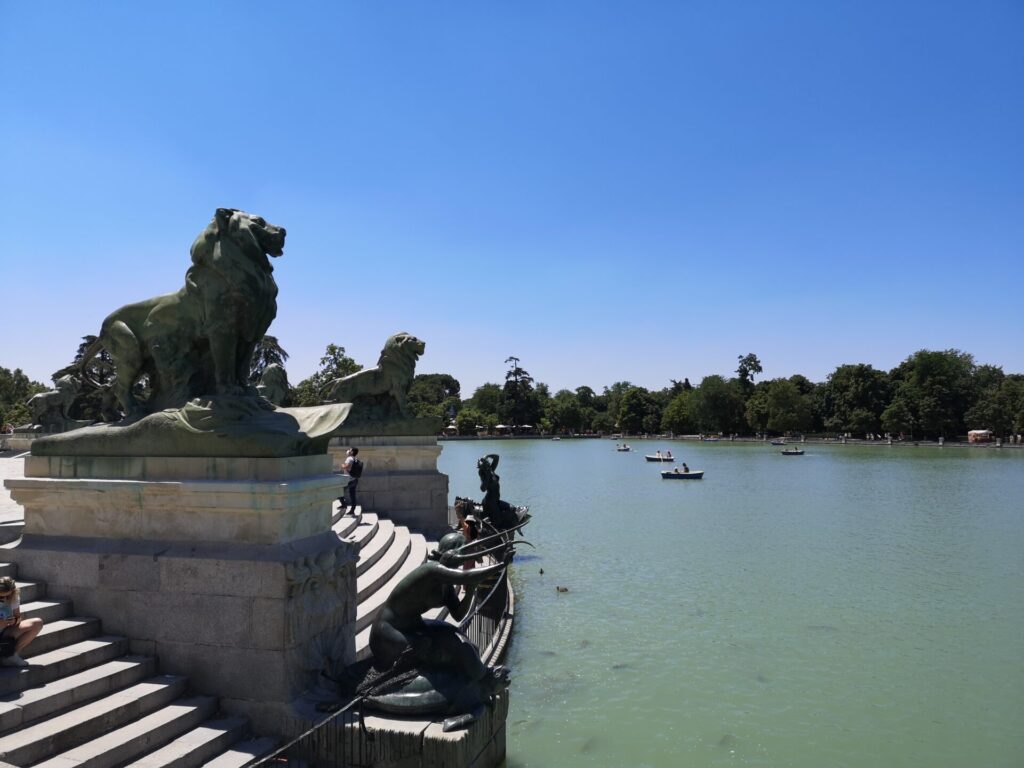
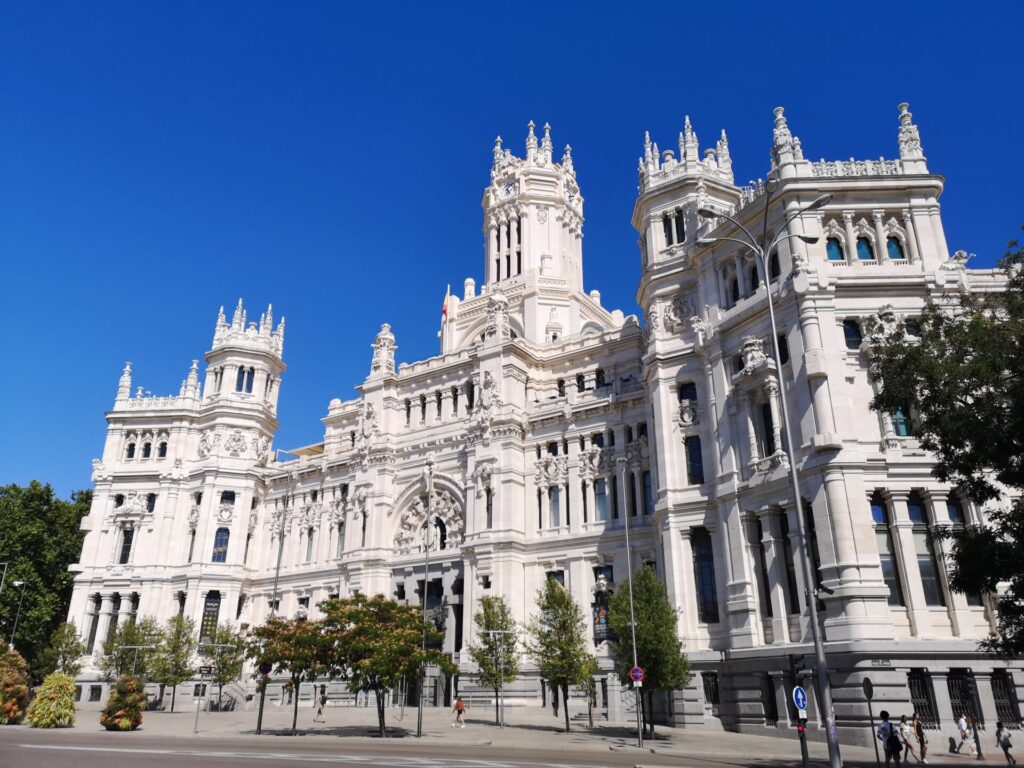
What to eat in Madrid
Being the capital of Spain, Madrid is home to some of Europe’s finest food and restaurants, including 20 Michelin star ones, and yet, still has very much a traditional Spanish culture with food at its heart. Alongside a diverse food scene including Mexican, Japanese, Chinese, Turkish and all things in between, Madrid is packed full of traditional tapas bars and Spanish restaurants serving up the Menu del dia (menu of the day). With these set menus, you can try some of the best Spanish (and other) cuisine for an incredibly reasonable price, usually costing no more than €13 ($15.20) for starter, main, dessert and drink, served at lunchtime (which is from 13:00-15:00 in Spain). If you would like to try some popular local dishes in Madrid then here are our top picks:
Boccadillo de Calamares – Originating from Madrid, this sandwich is a must-try, consisting of a baguette filled with freshly deep-fried calamari, sometimes with added spicy tomato sauce or garlic aioli
Huevos Rotos – This translates to ‘broken eggs’, which describes the dish perfectly. This is a simple, inexpensive and filling dish consisting of potatoes, splashed with salt and olive oil with eggs on top. There are lots of variations with different toppings including Iberico ham
Croquettas – Probably one of the most popular and well-known dishes across Spain, croquettes are delightful parcels of a variety of fillings, the most common being ham and cheese, deep-fried in breadcrumbs
Churros – These fried Dough snacks are commonly served with thick, hot chocolate and eaten as a late-night snack, late afternoon snack or sometimes even breakfast and go great with a coffee
Tortilla – A common tapas dish and a dish in its own right, tortilla is a Spanish omelette, consisting of egg and potato in its most basic form but commonly paired with ingredients such as ham, mushrooms, sausage and peppers
Money - Madrid Travel Costs
The currency in Madrid is the Euro (€). Credit & Debit cards are widely accepted throughout Spain and there are plenty of ATM’s which accept foreign cards. A service charge is generally not added to the bill so you can leave a tip if you are happy with the service. A tip of 5-10% is the norm and you can round up in taxi’s. Madrid is a very reasonably priced city, particularly compared to other European capital city’s. As a result, it is suitable for both budget and luxury travellers. Here’s a guide for what you can expect to pay (per person) for:
A local draught beer – €2-€4 ($2.50-$4.75)
A coffee – €1.50-€3 ($1.80-$3.50)
A boccadillo (local sandwich) – €3-€5 ($3.50-$6)
Budget restaurant meal – €10-€15 ($12-$18)
Mid-range restaurant meal – €20-€40 ($23-$47)
High-end restaurant meal – €50 ($58+)
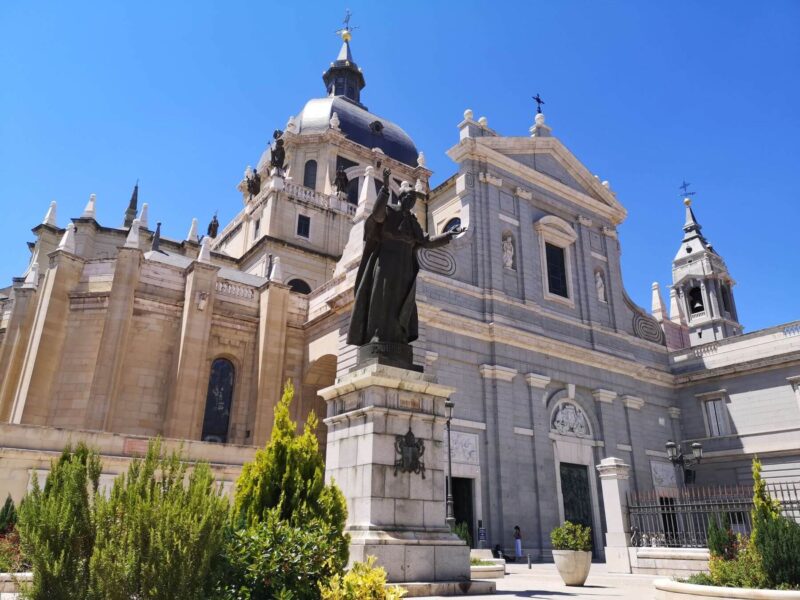
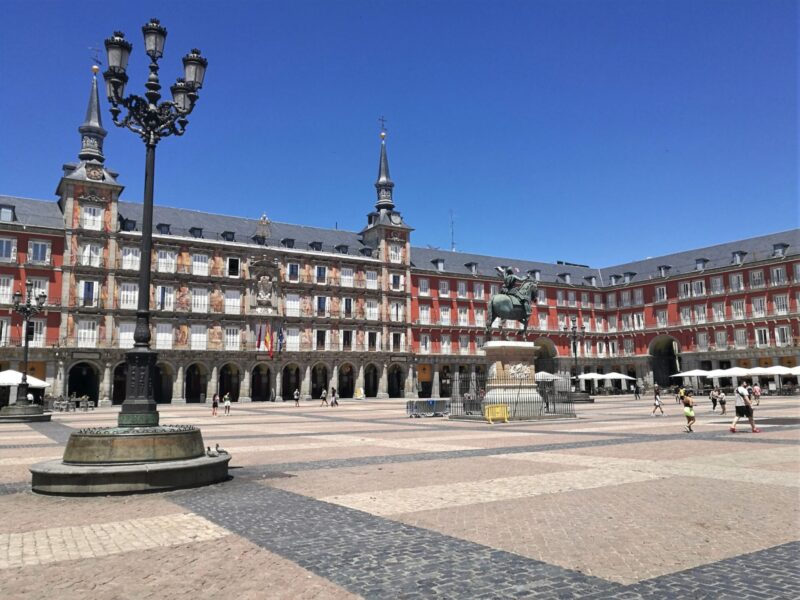
When to go to Madrid and for how long
The best time to visit Madrid is in May to June or September to October when the weather is warm but not too hot and there are fewer crowds out of the peak season. The majority of the major sights in Madrid can be covered in 3 days but the city easily deserves a 5-night trip and a visit of a week allows visitors to truly experience the city and fit in a couple of day trips outside of the city. We’ve put together a 3-day Madrid itinerary as a guide for how best to spend 3 days in Madrid to see all the best sights, taste the best food and experience the best that the city has to offer.
Local language and phrases
In Madrid, the local language is Spanish, as it is across all of Spain. English is also widely spoken. Check out our Spain travel tips for a quick guide to some of the most used Spanish words and phrases you’ll need while visiting Madrid and Spain
Madrid travel tips
– Madrid is a very safe city and is safe for lone travellers, including lone females
– There are a range of places to eat including those specialising in vegetarian, vegan and gluten free diets
– The tap water is safe to drink
– Madrid Airport offers Covid-19 PCR & Antigen tests for those that require them, however slots can get booked up very quickly so it is advisable to book well in advance if you require one
Madrid travel guide written in August 2021
This site uses affiliate links. When you click on a link and purchase an item, we may be compensated on qualifying purchases. However, this is at no extra cost to you. See our affiliate disclosure for further information.
Madrid Travel Articles
Madrid Walking Tour Videos And Maps
Check out our Youtube Channel for more Madrid walking tours, and tours for other destinations too.
Gran Via Walking Tour Route
A walking tour video highlighting the sights along the famous street of Gran Via and accompanying map showing the route we walked
Cortes Area Walking Tour Route
A walking tour video highlighting the sights in the Cortes area of Madrid city centre and accompanying map showing the route we walked
Palacio Walking Tour Route
A walking tour video highlighting the sights in the Cortes area of Madrid city centre and accompanying map showing the route we walked
Pin this Madrid Travel Guide to save it for later!
